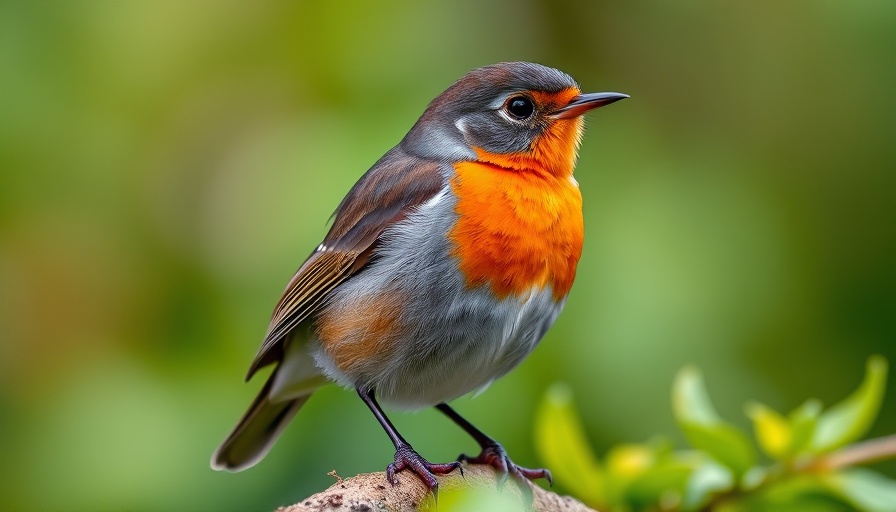
Discovering the European Robin: More Than Just a Bird
When we think of robins, many of us picture the American Robin, with its distinctive red-orange breast. However, this beloved bird's name has roots that date back to its European counterpart—the European Robin. Not much bigger than a chickadee, the European Robin is a symbolic figure that transcends mere appearance, serving as a cultural icon in many parts of Europe.
The Cultural Significance of the European Robin
The European Robin, often referred to as the "Robin Red-Breast," can be found gracing gardens and yards, becoming a harbinger of spring in many locations. Its ubiquitous presence is woven into the fabric of various stories and traditions, appearing in everything from beloved children's books like 'Peter Rabbit' to cherished Christmas cards. More than just a seasonal visitor, it embodies hope, joy, and good luck.
Folklore and Myths: The Robin’s Symbolic Journey
One of the most captivating tales surrounding the European Robin is its transformation of its breast color. According to folklore, the robin earned its fiery hue when it flew to Purgatory to bring water to suffering souls. In doing so, it was said to have been singed by divine flames, marking it forever with the color of compassion. Such stories illustrate how deeply embedded this small bird is within European cultural narratives, often representing caring and benevolence.
From Yard to National Bird: The Robin’s Unofficial Status
Remarkably, the Robin Red-Breast has been voted the unofficial national bird of the UK on at least two occasions. This accolade reflects the profound affection that people have for this little guardian of our gardens. The robin’s familiar song and gentle presence provide comfort and joy, marking the change of seasons and celebrating the cycles of life.
A Symbol of Heritage and Nature
Despite its small size, the European Robin's impact is undeniably significant. It serves as a reminder of our connection to nature and the importance of cherishing the environments we inhabit. By fostering a sense of appreciation for such wildlife, we strengthen our resolve to protect their habitats, enriching both our lives and that of these feathered companions.
 Add Row
Add Row  Add
Add 




 Add Row
Add Row  Add
Add 

Write A Comment